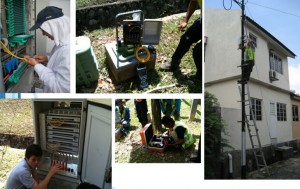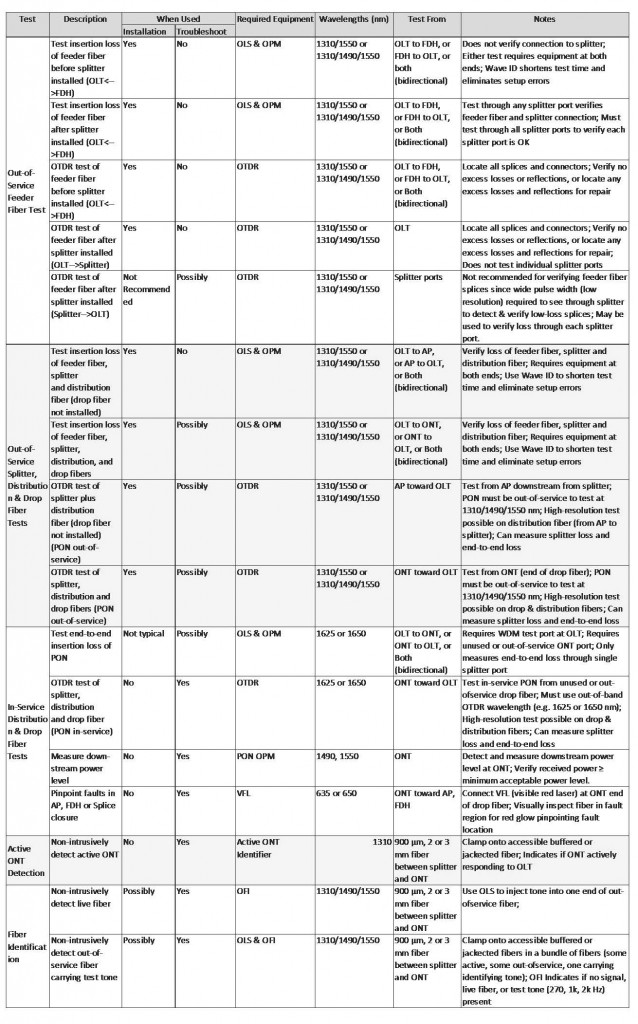 With the increasing demands for bandwidth, FTTH (Fiber to the Home) is considered as a next-generation technology for delivering more bandwidth, reliability, flexibility and security to end-users. PON (Passive Optical Network) is the main structure of FTTH network which can provide optical fiber bandwidth advantages at a lower cost than P2P (Point to Point) architecture affords. However, PON presents unique test challenges when installing and maintaining the FTTH network. Furthermore, optical testing is typically performed at various points in a network’s lifetime. Thus, it is very necessary to know which tests should be done and when and where to do it.
With the increasing demands for bandwidth, FTTH (Fiber to the Home) is considered as a next-generation technology for delivering more bandwidth, reliability, flexibility and security to end-users. PON (Passive Optical Network) is the main structure of FTTH network which can provide optical fiber bandwidth advantages at a lower cost than P2P (Point to Point) architecture affords. However, PON presents unique test challenges when installing and maintaining the FTTH network. Furthermore, optical testing is typically performed at various points in a network’s lifetime. Thus, it is very necessary to know which tests should be done and when and where to do it.
In general, optical testing in FTTH can be divided into two part—installation verification testing and maintenance troubleshooting. This is a very general classification according to the state of the network. Installation verification testing occurs as the network is being constructed or after network installation is complete, but before the network is activated. While maintenance troubleshooting is performed when service outages occur, and typically requires rapid response to restore service as quickly as possible.
In installation verification testing, the most complete testing is performed, including insertion and return loss testing as well as OTDR (Optical Time Domain Reflectometer) testing. Pass/fail criteria may be applied to end-to-end length, loss and optical return loss results, as well as to individual event loss and reflectance measurements for splices, connectors, and splitters. Formal reports may be generated, including all of the measurements, OTDR traces, pass/fail criteria and pass/fail results.
Maintenance troubleshooting is done through reroute restoration and/or fault location, repair, and verification before restoring active service. Troubleshooting may also require non-disruptive fiber identification to ensure in-service fibers are not disconnected. Maintenance personnel may require a visual fault locator (VFL) to precisely pinpoint the location of breaks or macro-bends in splice or access enclosures.
Actually, the installation verification testing and maintenance troubleshooting is not as simple as description above. They usually include various test according to different test location and purpose. And for different tests, the performed time and test equipment, as well as the test wavelengths are not fully consistent. To understand this better, here I use a table to summarize.
Click the table to view large version.




